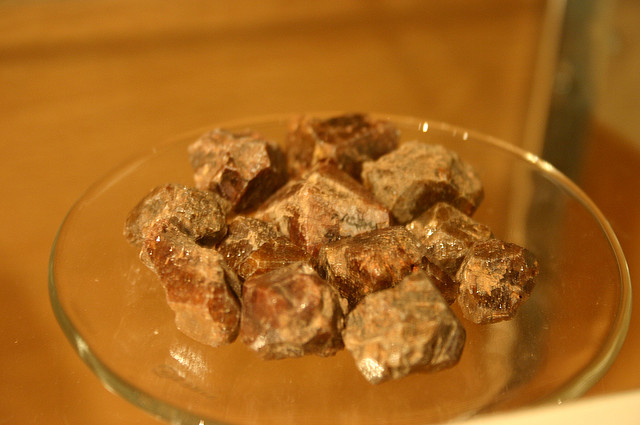The October copy of the journal Geology contains a paper that made me think of Sherlock Holmes. That doesn’t happen very often. One of the fictional detective’s many skills was the ability to get important insights from the sediment found on shoes. The paper “Detrital zircon record and tectonic setting” looks at ancient sediments and proposes a new way of working out how they formed.
Holmes’ methods were based on linking a sediment sample to its source region – recognise sediment as characteristic of a particular area and you know a suspect with some on their shoe has been there. Holmes (and real forensic geologists) rely on the fact that they can visit the place where the sediment came from. Cawood, Hawkesworth and Dhuime on the other hand study ancient sedimentary basins where the source regions are unknown, either eroded away or removed by tectonic rearrangements. How to get insight from these sediments? A real ‘three pipe problem‘ for sure.
Our authors focus on a particular type of mineral grain, common in sedimentary basins: zircon. Zircon ( ZrSiO4) is beloved by geologists as it contain significant amounts of Uranium which is tightly bound inside small crystals. This makes them perfect for radiometric dating – measuring the ratios of isotopes to infer how long the mineral has existed for. If a zircon is in a granite intrusion, the age of the zircon is most likely the age of the intrusion. Measuring the age of zircon in a sediment doesn’t give you the age of the sediment – being eroded and washed into a sedimentary basin doesn’t reset the isotopic clock. But measure the age of many zircons in a sediment and you start getting insights into the type of rocks that were eroded to form the sediment – the source region.
Sedimentary basins have been classified into different types, based on their tectonic setting. Convergent basins are found near subduction zones and associated volcanic arcs. Collisional basins, otherwise known as foreland basins, form in the space formed where crust is pushed down by the weight of thickened crust. Finally extensional basins form where crust is stretched, either in rift basins or on the edge of oceans. Our authors’ argument is that each type of basin will have a distinctive pattern of ages preserved in their zircons.
Convergent basins, forming near to volcanic arcs are characterised by a large proportion of very recent zircon ages. Nearby eroding rocks may well have been created by recent volcanism. Volcanic ash may even pop zircon grains directly into the sediment. Collisional basins have much fewer grains of recent ages – there are no volcanoes. However their sediment comes from the nearby mountain range made up of relatively recent metamorphic or igneous rocks. Zircons eroded off the high Himalayas that end up in the Ganges basin are 25 million years old. Extensional basins are far from any contemporary or recent source of zircons. Think of sediment forming off the East cost of North America. It will contains zircons formed during a whole range of orogenies and volcanic episodes, some very old, none very young.
For a couple of decades now scientists have had machines capable of quickly measuring zircon ages so there is a good data set. Our authors scoured this and found evidence to support their thesis. Taking ages of zircons, and subtracting the age of the basin, they plot cumulative ages. Convergent basins do indeed mostly contain very young zircons and collisional relatively young. Extensional basins show a wider variation, and are much more likely to contain older zircons.
Appropriately they try to solve some mysteries. They take data from Precambrian basins where the tectonic setting is a matter of debate and plot it up.
Since life is not a detective novel, the possibility remains that this technique will yield false conclusions. Their identification of the zircon age pattern from the Proterozoic Moine basin of Scotland as syncollisional puts them in agreement with workers at the British Geological Survey who came to the same conclusion based on a whole range of studies. For this case, at least, the evidence is looking pretty persuasive.
Picture of Zircon crystals from Ryan Somma on Flickr under Creative Commons.Cawood, P., Hawkesworth, C., & Dhuime, B. (2012). Detrital zircon record and tectonic setting Geology, 40 (10), 875-878 DOI: 10.1130/G32945.1

2 comments
Comments are closed.